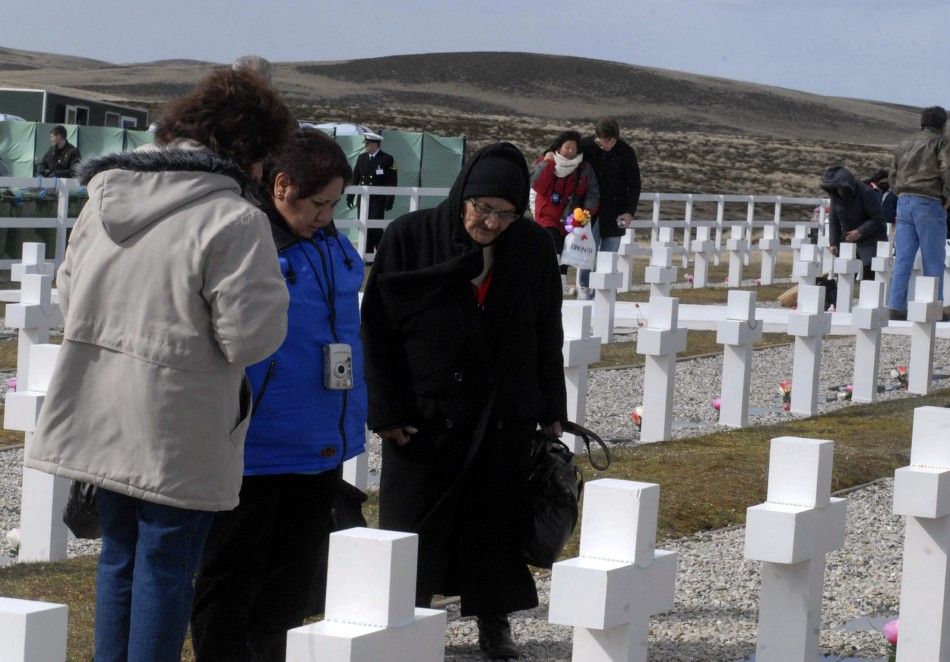Falkland Islands: A Look at the Disputed Territory [PHOTOS]
A decades-old dispute between Argentina and the United Kingdom has put the remote Falkland Islands, which the Argentines call the Malvinas, back in the news just in time for the 30th anniversary of the Falkland Islands War.
For many, it seems like déjà vu. Some blame the new Meryl Streep movie about Margaret Thatcher coming out in time for the anniversary of the 74-day scuffle. Others claim it's the posting of the heir to the British throne and his air force helicopter and the deployment of the world's most advanced new warship and nuclear missile submarine to the cold South Atlantic waters.
Those who follow Argentine politics say it has to do with pre-election opinion poll numbers for President Cristina Fernandez de Kirchner. Perhaps the biggest reason it's on both nation's minds is a recent Edison Investment Research study suggesting that Britain could receive billions of dollars from oil recovered around the English-speaking UK Overseas Territory.
Kirchner lodged an official complaint with United Nations Secretary-General Ban Ki-moon last week over the UK's decision to send nuclear weapons to the Falkland Islands in defiance of a treaty that seeks to establish a nuclear-free zone in the South Atlantic.
Britain argues that its sovereignty over the islands predates the existence of the state of Argentina and it will endure so long as the islanders wish to remain British.
The Falkland Islands remain an agricultural society that is heavily dependent on tourism. Grumblings of further dispute between the two nations are troublesome for the Islands' welcoming image.
The Falkland Islands are situated in the South Atlantic some 400 miles east of the South American mainland and 850 miles north of the Antarctic Circle. East and West Falkland have a landmass comparable to that of Connecticut and are home to fewer than 3,000 islanders.
With nearly 500,000 sheep in the Falklands, there are roughly 163 sheep per person. There are also more than 500,000 breeding pairs of penguins camped out along the rugged coast.
There are more than 30 European tour operators featuring tailor-made packages and escorted tours to the Falkland Islands. Many come on British Ministry of Defense (MoD) Charter flights from the UK, but others choose the weekly commercial service from Santiago on LAN Chile, which has seen a steady increase in traffic.
Rumors swirled over the weekend that LAN would stop all flights to the Falklands at Argentina's request. However, Chilean Foreign Minister Alfredo Moreno denied the rumors, saying no talks have taken place. He added that the Argentine government has never proposed an economic blockade, either to us or to any other country.
LAN's service to the Falkland Islands is the only flight from the South American mainland. As such, trips must be 7-, 14-, or 21-day excursions.
The majority of visitors come to the islands in the summer peak season between October and April, when the weather is more favorable for wildlife viewing.
The Falkland Islands are also a popular stop on several cruise ship itineraries.
The capital, Stanley, has just 2,000 residents. The colorful seaside town is set on a natural harbor and has a rich maritime history from the days when great sailing ships and early steam vessels called on their journeys around Cape Horn.
Precipitous cliffs, ancient volcanic remains, and wide open vistas dot the landscape - though it does have its scars.
Ironically, seaside minefields from the war have become favorite breeding grounds for penguins. The animals don't weigh enough to detonate the mines, so the fields have become protected, human-free sanctuaries that are popular ecotourism destinations.
Mount Tumbledown, Mount Harriet, Goose Green and San Carlos all became household names in 1982 during Argentina's brief occupation of the Falklands. Guided tours of these and other battlefields, cemeteries, and memorials are available for those with an interest in military history.
With the 30th anniversary of the Falkland Islands War approaching and tensions on high, here's a look at this rugged outpost in the South Atlantic.







© Copyright IBTimes 2024. All rights reserved.












